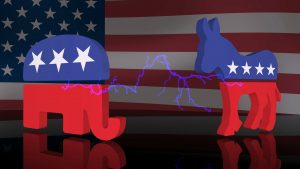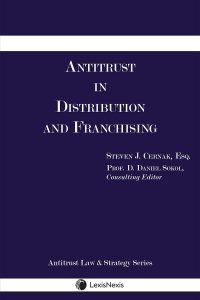Author: Jarod Bona
Competitors battle in the marketplace and sometimes battle in the courts. Bona Law is an antitrust and competition boutique law firm, but most people think of the “competition” part of that description as redundant to the antitrust label. That is not a surprise because outside of the United States, most people refer to antitrust law as competition law.
But I view it differently: Antitrust Law is the literal collection of state and federal antitrust laws, including those involving restraints of trade, monopolies, mergers, criminal antitrust, and others. But Competition Law incorporates a wide range of business torts and statutes that make up the practical reality of competitor and marketplace court battles. These include, for example, the Lanham Act, patent laws, unfair competition statutes, tortious interference and others.
Indeed, you will notice that many antitrust complaints also include one or more additional non-antitrust claims. The players in these disputes can sometimes include consumers, for a class action lawsuit. But, for our purposes, we will primarily discuss business players within competition, either competitors or entities up and down the vertical chain of distribution of products or services. So, a court battle could match up two competitors, or perhaps a wholesale distributor and a retailer, for example.
Our job, as antitrust and competition attorneys, is to help clients solve legal problems involving any type of competition issue.
To that end, let me tell you about an important new competition decision. On August 3, 2020, the California Supreme Court issued its decision in Ixchel Pharma, LLC v. Biogen, Inc. that made law for certain tortious interference claims and for California Business and Professions Code section 16600 (which is mostly associated with prohibitions on certain non-compete agreements in California).
Tortious Interference
Tortious interference divides into two different claims: (1) tortious interference with contract and (2) tortious interference with prospective economic relationship (no contract, but maybe one was on the horizon).
For more detail, we describe the elements of tortious interference in California here.
The law (and California Supreme Court) consider tortious interference with contract as a bigger deal than the other kind of tortious interference—they don’t like the idea of breaking up existing contracts. So, in its wisdom, it requires an additional element for tortious interference that doesn’t involve a contract (the prospective-economic-relationship kind): The act of interference must be independently wrongful in some way. Interference by itself is not sufficient—there must be something else wrong with the interference act besides the interference.
But what does it mean for an act to be independently wrongful?
According to the California Supreme Court, “an act is independently wrongful if it is unlawful, that is, if it is proscribed by some constitutional, statutory, regulatory, common law, or other determinable legal standard.” (p. 9, quoting Korea Supply Co. v. Lockheed Martin Corp, 29 Cal.4th 1134, 1159 (2003)).
A plaintiff need not plead an “independently wrongful act” for a tortious interference with contract, except—for the holding in this new California Supreme Court case (Ixchel).
You can read the decision for the facts, but the question in dispute is whether a plaintiff asserting a claim for tortious interference with contract has to plead an independently wrongful act, if the contract is an at-will contract. An at-will contract is one that either side can terminate at any time, for any or no reason.
The California Supreme Court—in deciding the issue for the first time—acknowledged that a “number of states have adopted” the independent wrongfulness requirement for tortious interference with at-will contracts. (14). And they ultimately agreed with these states.
An at-will contractual relationship is one that has no assurance of future economic relations—because either side may terminate it for any or no reason. That is, neither party has a “legal claim to the continuation of the relationship.” (17). And even though the parties to such a deal may expect it to continue, from the perspective of third parties, “there is no legal basis in either case to expect the continuity of the relationship or to make decisions in reliance on the relationship.” (17).
Just as importantly, the California Supreme Court expressed worry that allowing claims for tortious interference of at-will contracts without an independent wrongfulness requirement would chill legitimate business competition (also a common concern of judges interpreting antitrust laws). The Court didn’t want to create a cause of action for typical aggressive competition.
As a result, the Court held that “to state a claim for interference with an at-will contract by a third party, the plaintiff must allege that the defendant engaged in an independently wrongful act.” (18).
California Business and Professions Code Section 16600
Section 16600: “Except as provided in this chapter, every contract by which anyone is restrained from engaging in a lawful profession, trade, or business of any kind is to that extent void.”
This is the famous California law that invalidates most non-compete agreements. Indeed, oftentimes, the most difficult question with these cases is whether California or some other law applies.
 The Antitrust Attorney Blog
The Antitrust Attorney Blog












